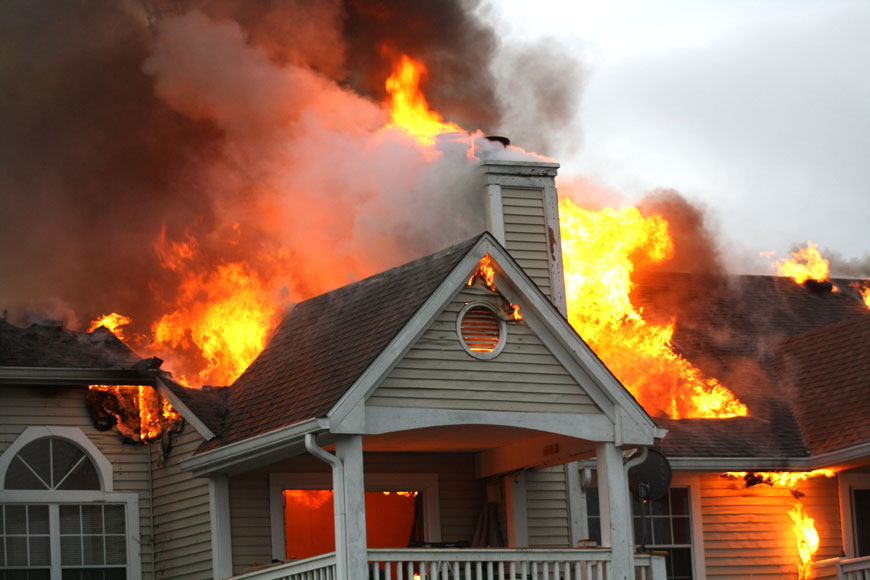
How To Prevent A House Fire
House fires are extremely common and caused by a number of domestic factors. According to the National Fire Protection Association (NFPA) statistics compiled from 2011-2015, 43 percent of the nearly 360,000 house fires responded to by U.S. fire departments were caused by cooking equipment, followed by heating systems/furnace, 15 percent; electrical systems and lighting equipment, 9 percent; arson, 8 percent; and smoking materials, 5 percent.
In addition, other fires were caused by candles, dryers, washing machines, lightning, children playing with fire, Christmas tree lighting, and faulty fireplaces.
As for injuries and fatalities. the NFPA states that house fires cause an annual average of about 2,500 civilian fire deaths and 12,300 injuries, leading to $6.7 billion in direct damage.
But how can we avoid these numbers from climbing? What can we do to prevent these tragedies from burning dreams and memories? There are a number of precautions we can be making to protect our families. Take the kitchen for example, an area that’s extremely prone to fires. The American Red Cross suggests the following:
- Never leave cooking food unattended, especially when frying, grilling or broiling. If you have to leave the kitchen, turn off the stove, and don’t leave the house while cooking.
- Always use a timer.
- Have a fully charged Class B dry chemical fire extinguisher close at hand in your kitchen and know how to use it.
- Dress safely: No loose-fitting clothing or dangling sleeves while cooking.
- Keep children away from the cooking area—at least three feet away from the stove.
- If it’s flammable, keep it away from the stove. That means pot holders, oven mitts, wooden utensils, paper or plastic bags, food packaging, towels or curtains.
- Before heading off to bed or leaving the house, make sure stoves, ovens, and small appliances are turned off.
- Have working smoke alarms in the kitchen and throughout the home.
Be sure to follow these suggested guidelines to avoid a fiery problem.
